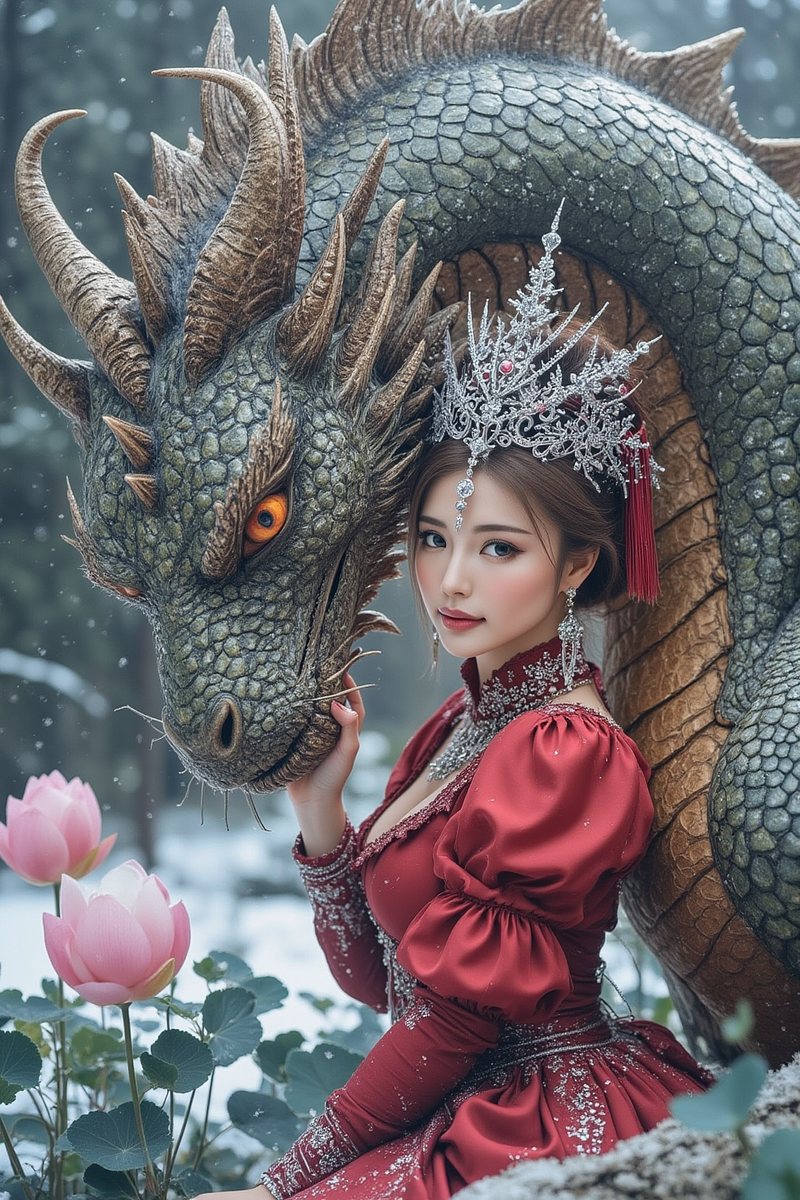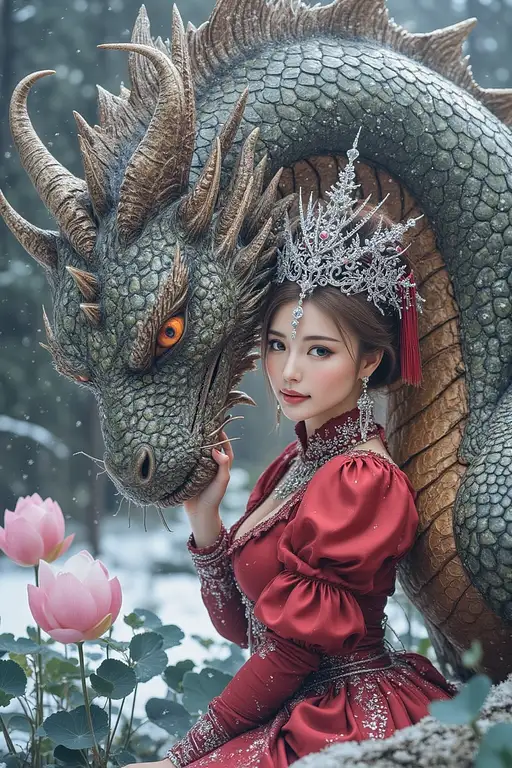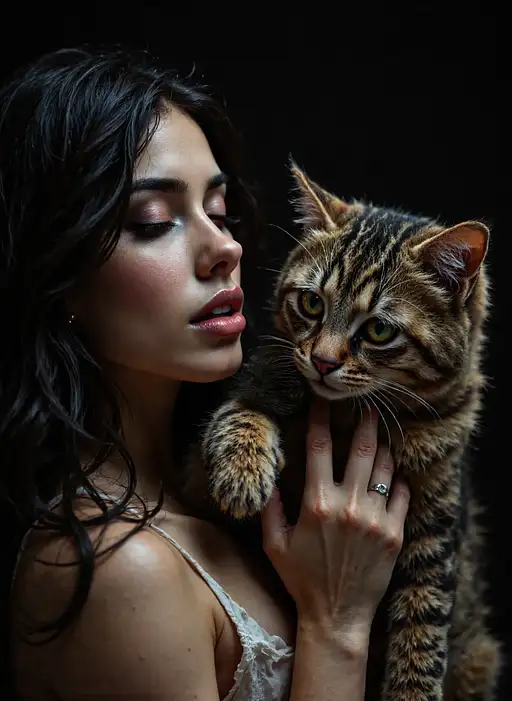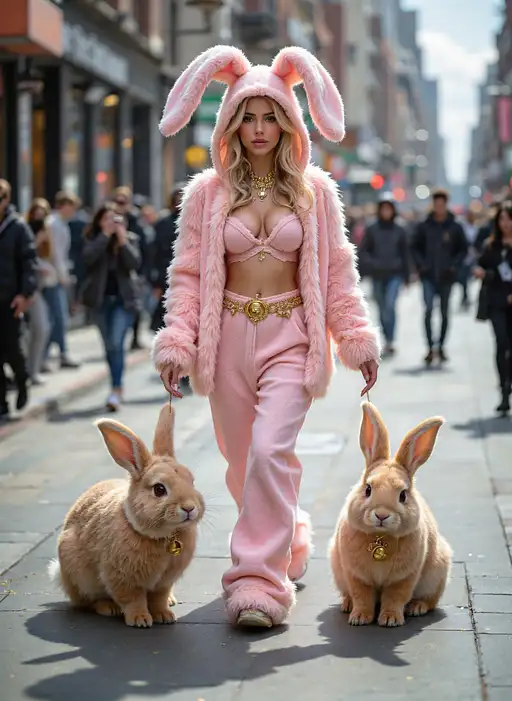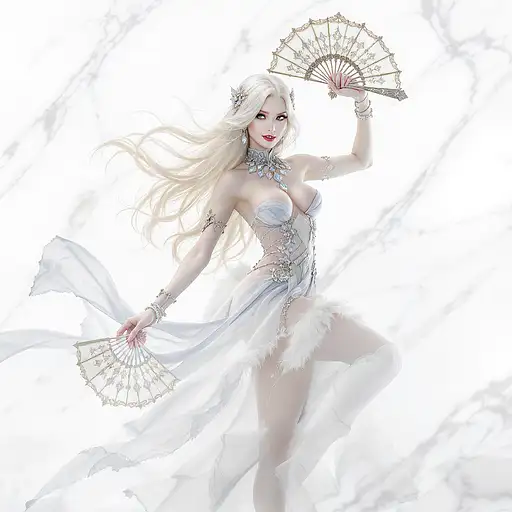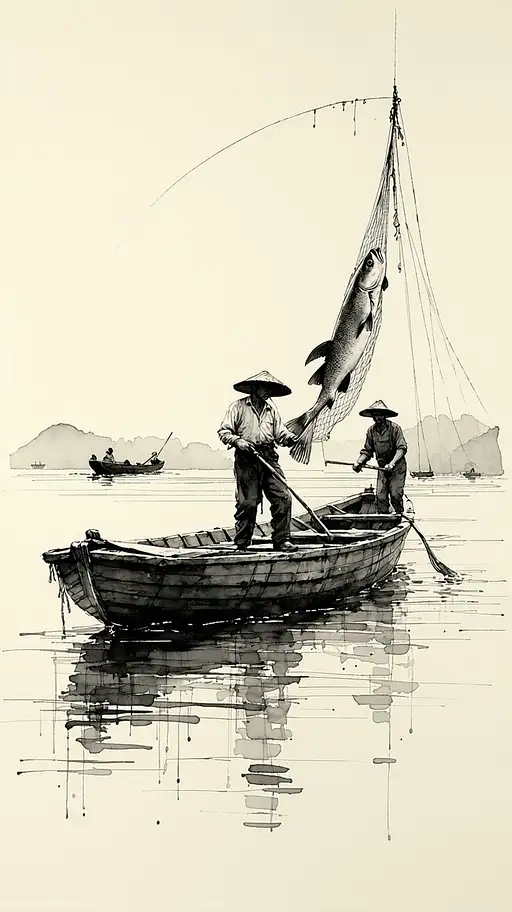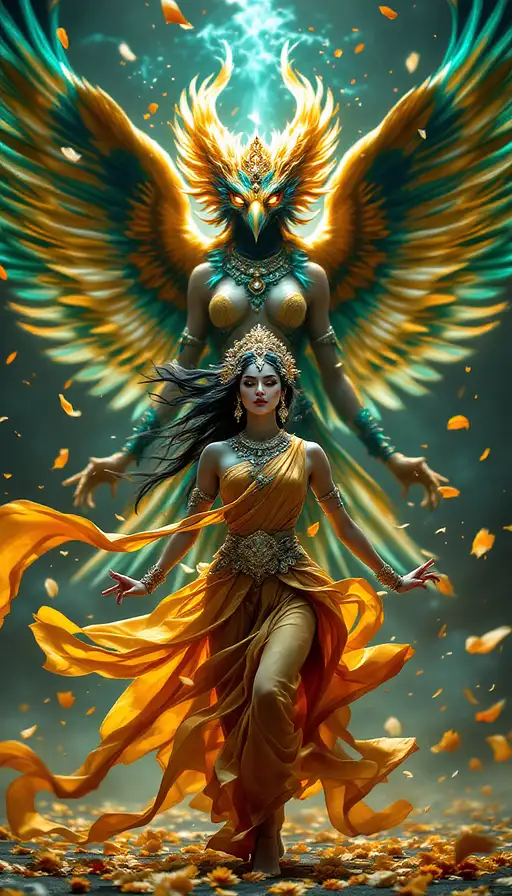5 months ago
This is a majestic and highly detailed fantasy portrait that depicts an intimate and powerful bond between a regal japanese woman and a formidable iron-rusted dragon. The scene is set in a cool, wintry landscape, creating a stunning contrast between the cold environment and the warmth of the connection between the two figures. The artwork has a hyper-realistic yet stylized quality, blending elements of high fantasy, royalty, and nature. The Regal Woman: The woman is the central human figure, exuding an aura of grace, power, and serene beauty. Face and Makeup: She has fair, almost porcelain-like skin and delicate East Asian features. Her makeup is immaculate, with sharply defined, winged eyeliner, a subtle smoky eyeshadow in reddish tones, and a soft blush. Her lips are a rich, matte red. Her expression is calm and confident as she gazes directly at the viewer. Headdress: Her most striking feature is an elaborate headdress. It has an intricate, crystalline tiara made of silver or platinum, studded with glittering red gemstones. Gown and Jewelry: She is dressed in an opulent gown of a rich scarlet satin. The dress is exquisitely detailed with a high, ruffled collar, voluminous puffed sleeves, and layers of fabric. It is adorned with delicate, sparkling silver embellishments that resemble crystallized snowflakes, tying her attire to the wintery setting. Her jewelry is equally ornate, including long, dangling chandelier earrings and a matching high-necked necklace, all crafted from the same silver and gemstone materials as her tiara. On her right hand, which gently touches the dragon, she wears a silver ring. The Majestic Dragon: Positioned closely beside the woman is a massive and powerful dragon, likely a Western type in appearance. Appearance: The dragon is rendered in incredible detail, with a hide of deep, iron-rusted scales that have a rugged, armor-like texture. Sharp, formidable horns and spines run along the crest of its head. Eye and Expression: Its visible eye is a focal point, glowing with an inner light. The iris is a fiery orange-yellow with a slitted reptilian pupil, suggesting ancient wisdom and intelligence. Despite its fearsome appearance, the dragon's posture is one of calm and affection, leaning its massive head into the woman's gentle touch. It appears to be her guardian, companion, and confidant. Setting and Atmosphere: The figures are situated in a snowy, mystical forest. Environment: The background is softly blurred, creating a shallow depth of field that keeps the focus entirely on the woman and dragon. The ground is covered in white snow, and the dark, indistinct shapes of trees can be seen behind them. Lighting and Color Palette: The scene is bathed in a cool, blue-toned light, characteristic of twilight or an overcast day in winter. This cool palette is beautifully contrasted by the vibrant purple of the gown, the deep green of the dragon, the warm pink of the lotus, and the fiery glow of the dragon's eye. The overall mood is one of quiet magic, strength, and serene harmony.

